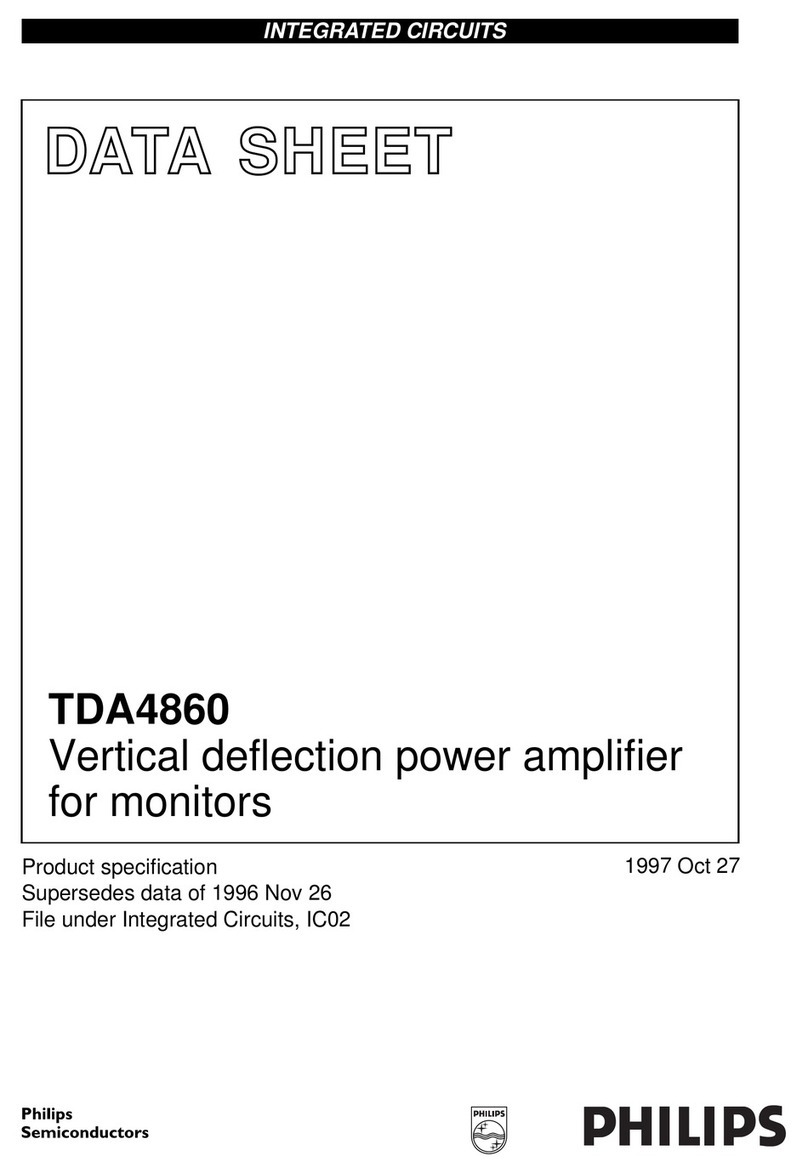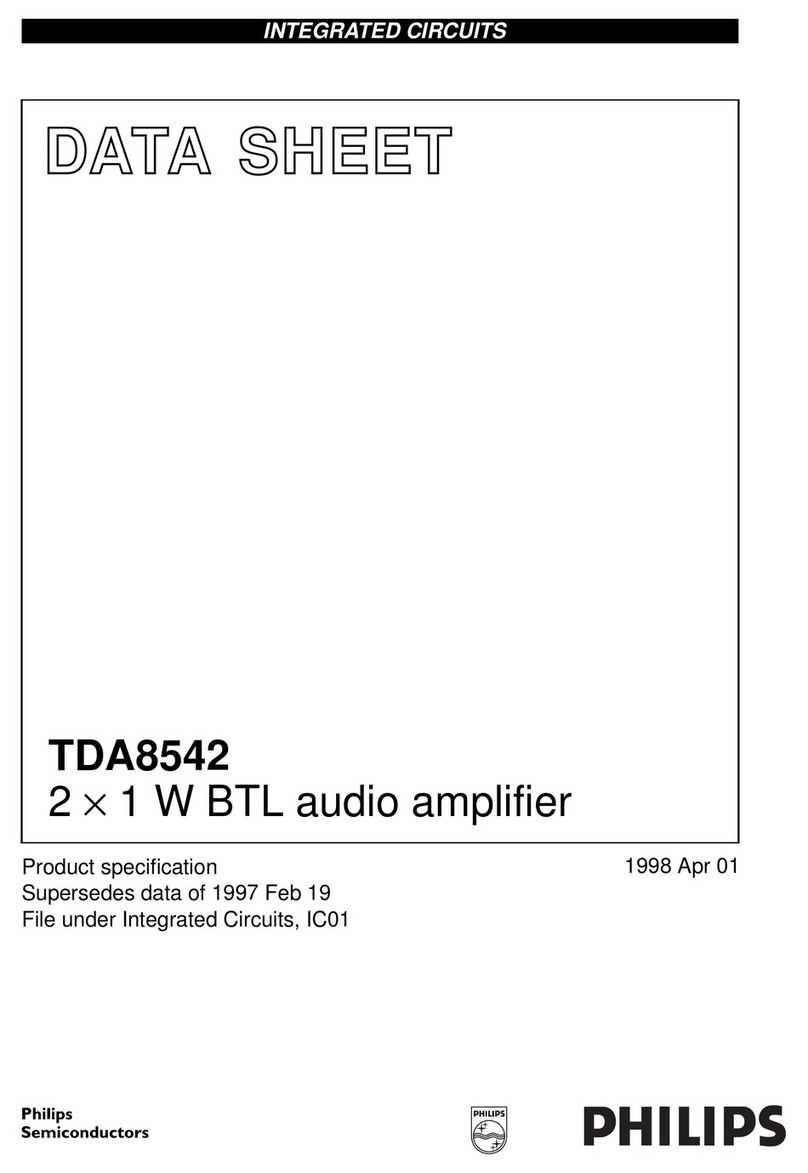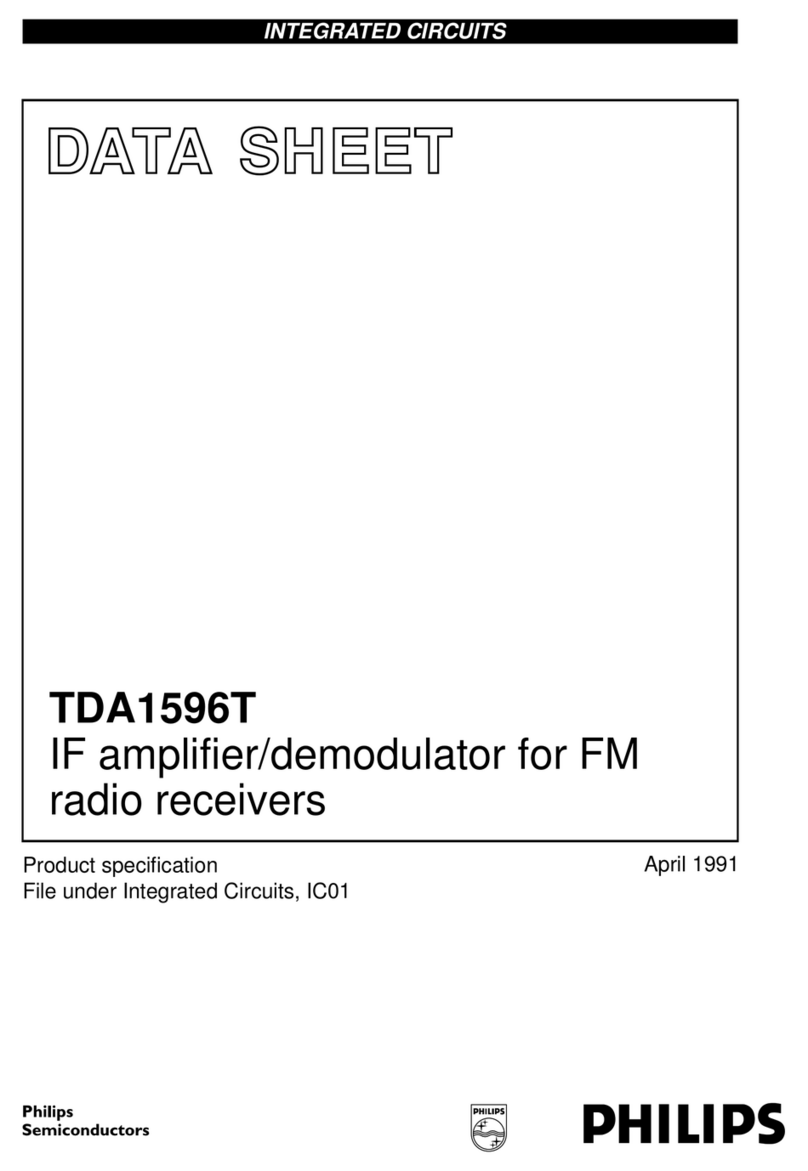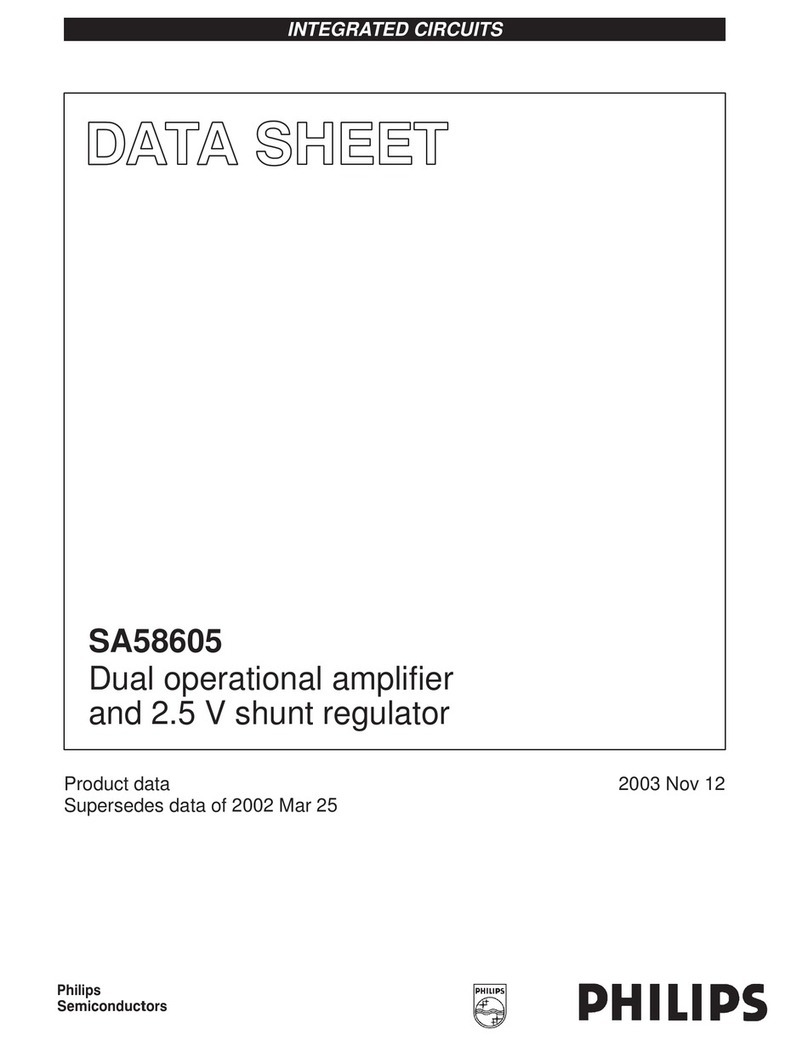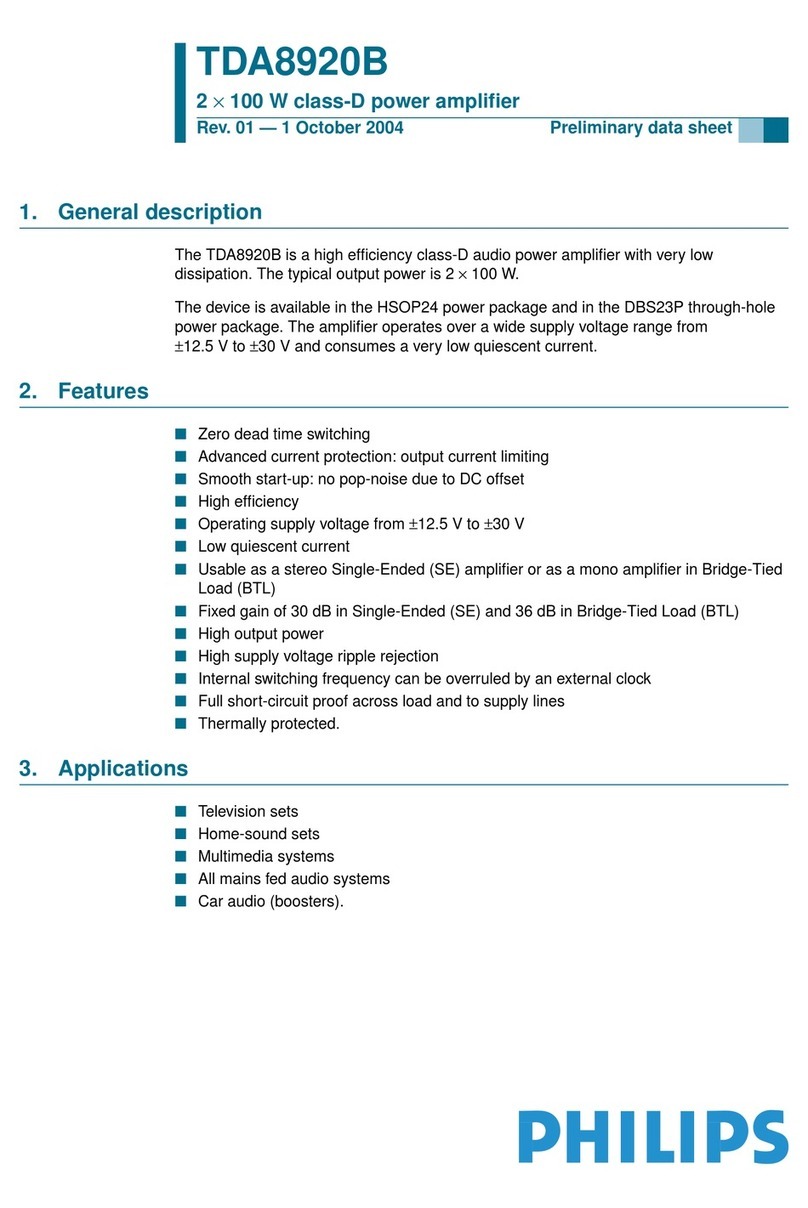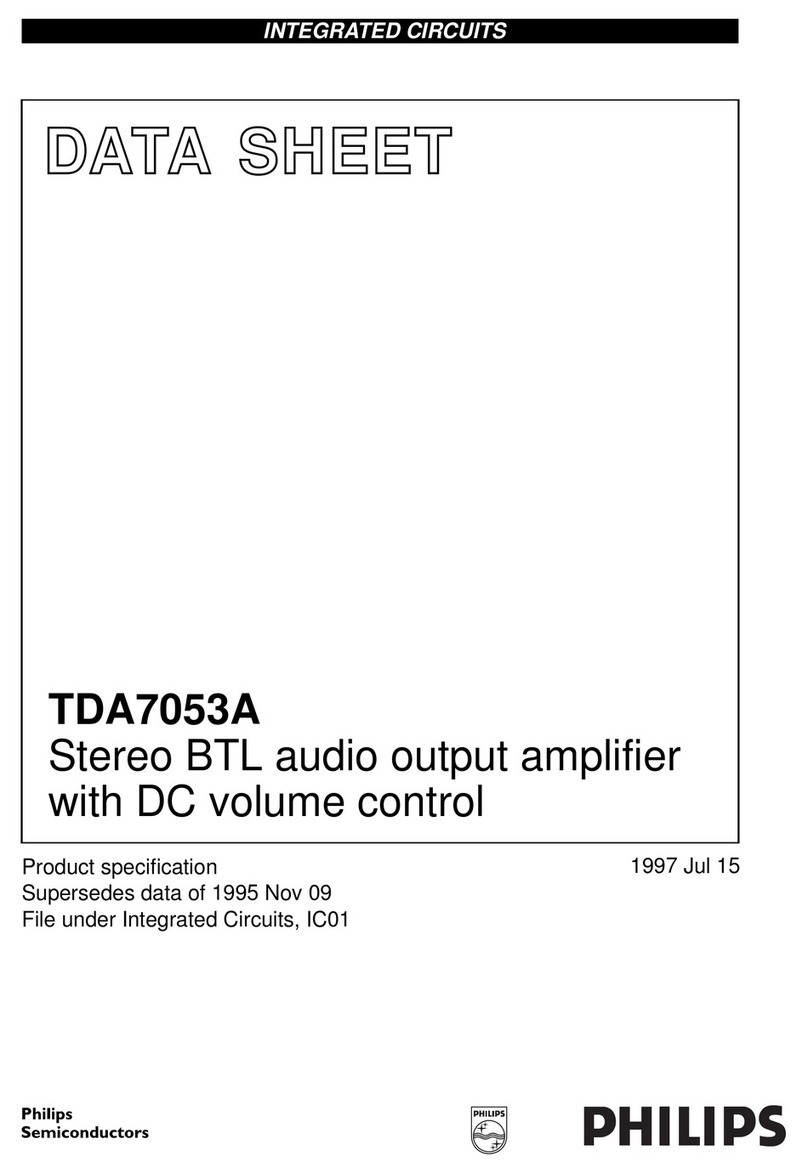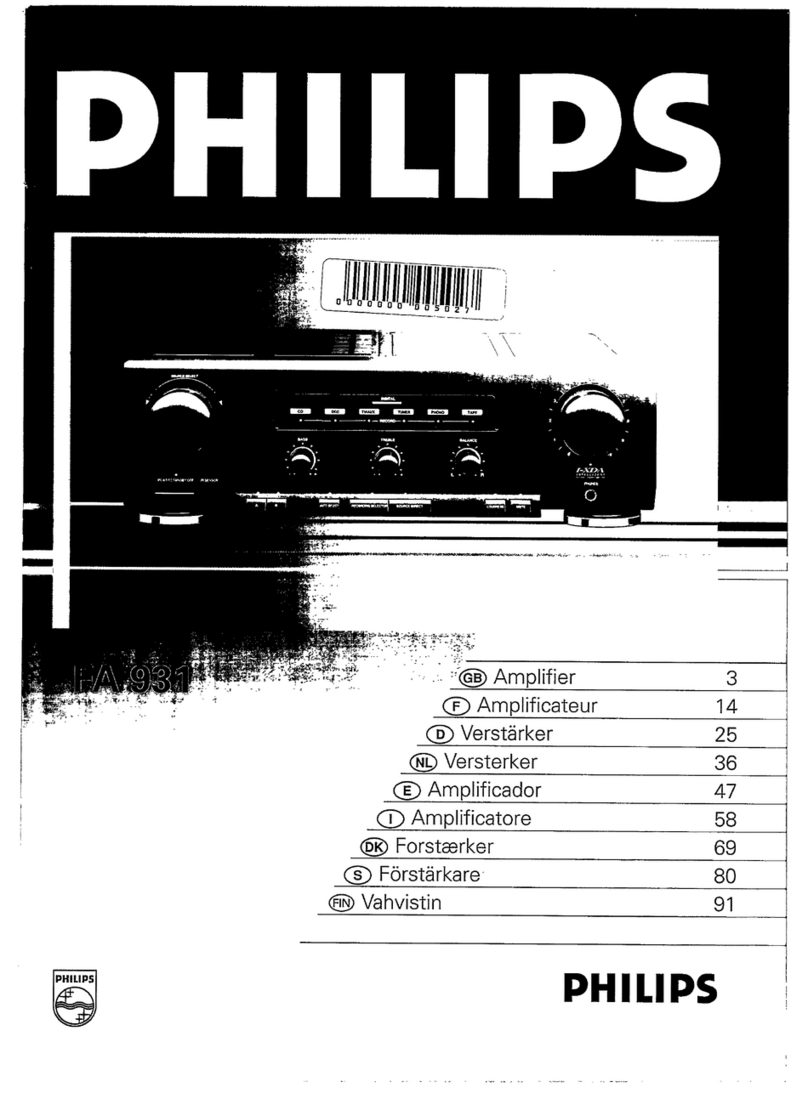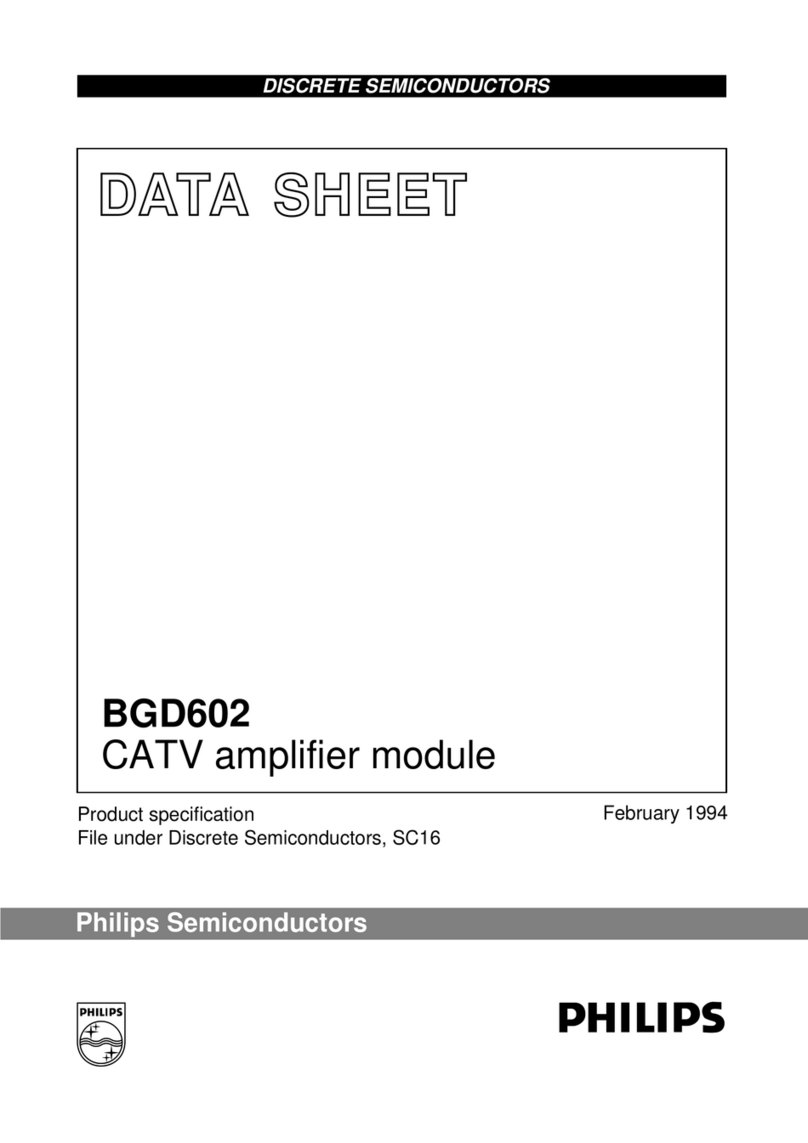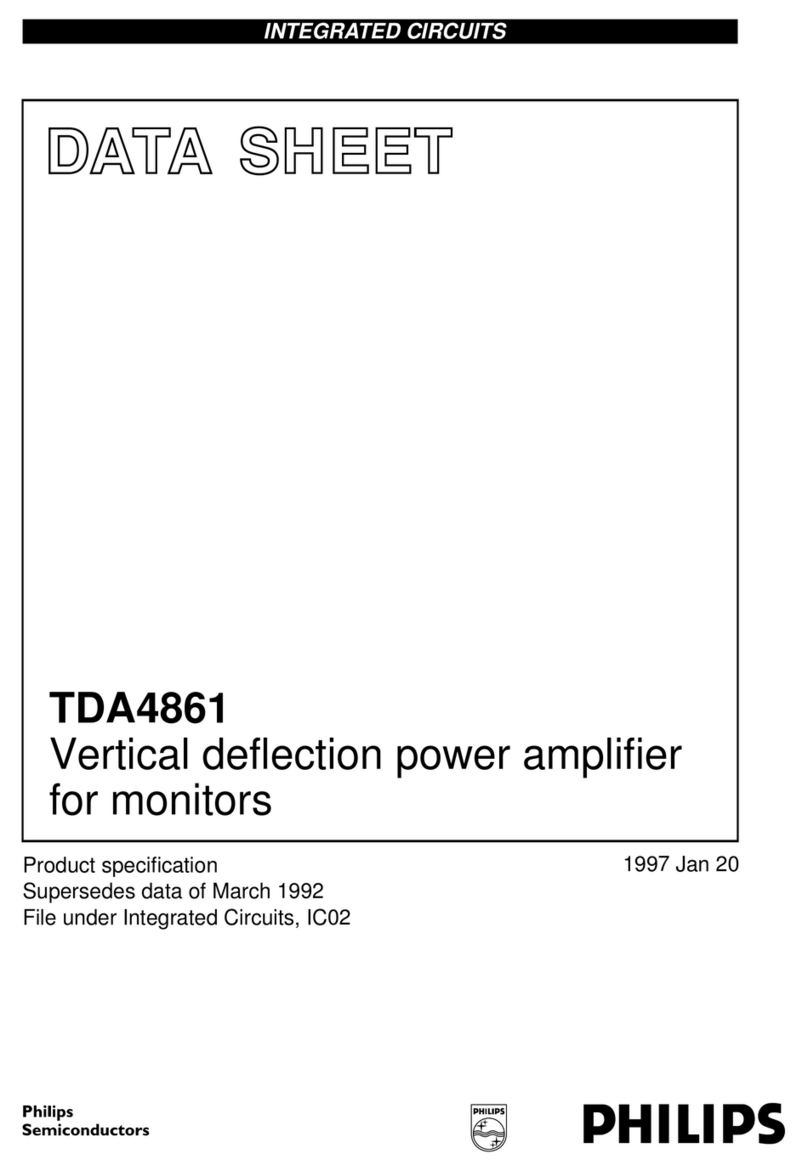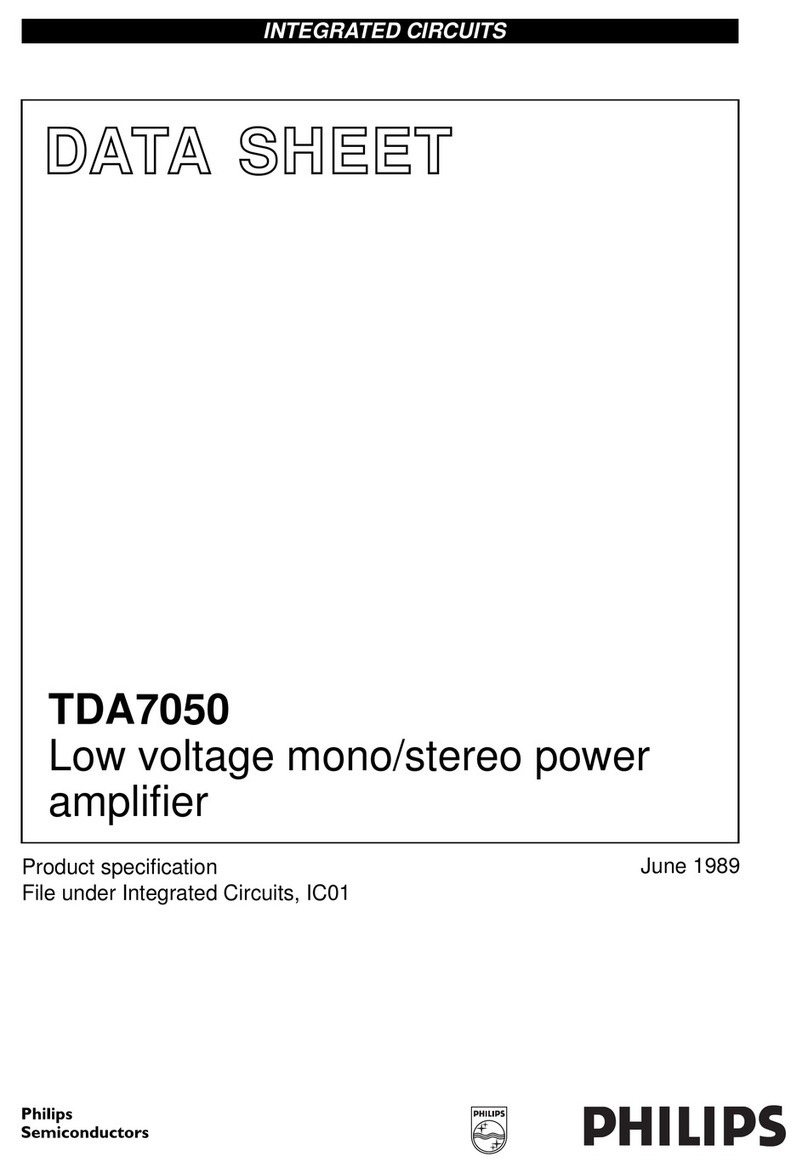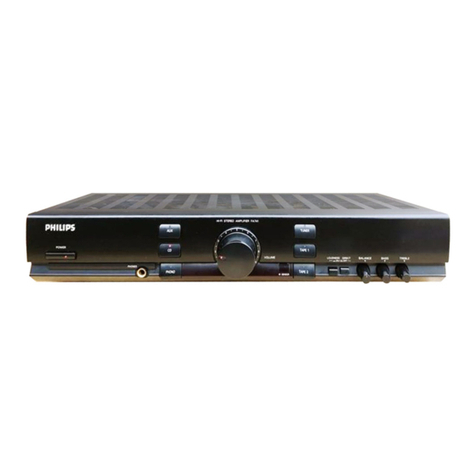1999 Jun 30 5
Philips Semiconductors Product specification
2×24 W BTL or 4 ×12 W single-ended
car radio power amplifier TDA8561Q
FUNCTIONAL DESCRIPTION
The TDA8561Q contains four identical amplifiers and can
be used for Single-Ended (SE) or Bridge-Tied Load (BTL)
applications. The gain of each amplifier is fixed at 20 dB
(26 dB in BTL). Special features of the device are:
Mode select switch (pin 14)
•Low standby current (<100 µA)
•Low switching current (low cost supply switch)
•Mute facility.
Toavoidswitch-onplops,itisadvised to keep theamplifier
in the mute mode during ≥100 ms (charging of the input
capacitors at pins 1, 3, 15 and 17). This can be achieved
by:
•Microcontroller control
•External timing circuit (see Fig.11).
Diagnostic output (pin 16)
DYNAMIC DISTORTION DETECTOR (DDD)
At the onset of clipping of one or more output stages, the
dynamic distortion detector becomes active and pin 16
goes LOW. This information can be used to drive a sound
processor or DC volume control to attenuate the input
signal and thus limit the distortion. The output level of
pin 16 is independent of the number of channels that are
clipping (see Figs 3 and 4).
SHORT-CIRCUIT PROTECTION
When a short-circuit occurs at one or more outputs to
ground or to the supply voltage, the output stages are
switched off until the short-circuit is removed and the
device is switched on again, with a delay of approximately
20 ms, after removal of the short-circuit. During this
short-circuit condition, pin 16 is continuously LOW.
When a short-circuit across the load of one or both
channels occurs the output stages are switched off for
approximately 20 ms. After that time it is checked during
approximately 50 µs to see whether the short-circuit is still
present. Due to this duty cycle of 50 µs/20 ms the average
current consumption during this short-circuit condition is
very low (approximately 40 mA).
During this short-circuit condition, pin 16 is LOW for 20 ms
and HIGH for 50 µs (see Fig.5).
The power dissipation in any short-circuit condition is very
low.
Fig.3 Distortion detector waveform; BTL
application.
handbook, halfpage
V
0
VP
VO
0
t
MGA705
16
Fig.4 Distortion detector waveform; single-ended
application.
handbook, halfpage
0
VP
VO
t
0
MGA706
V16

